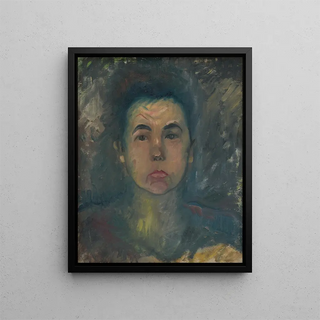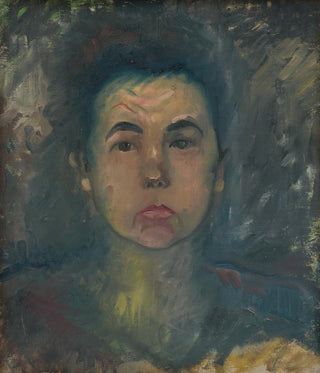Art print | Bust of a woman - Arnold Peter Weisz-Kubínčan


View from behind

Frame (optional)
Arnold Peter Weisz-Kubínčan’s "Bust of a Woman" is a piece that transcends the simple status of a decorative object to become a true exploration of beauty and human emotion. This bust, imbued with remarkable delicacy, invites the viewer to immerse themselves in a universe where sculpture becomes a bearer of meaning and history. The finesse of the details and the expression of the face captivate instantly, offering a striking vision of femininity. Through this art print, the artist manages to evoke deep feelings, inviting everyone to reflect on the nature of identity and beauty.
Style and uniqueness of the work
Weisz-Kubínčan’s style is distinguished by a harmonious blend of realism and idealism, which gives his work a timeless dimension. In "Bust of a Woman," each curve and line is crafted with care, demonstrating undeniable technical mastery. The surface texture, subtly polished, plays with light, creating delicate shadows that accentuate the contours of the face. This meticulous approach allows capturing not only the external appearance but also the very essence of the personality depicted. The bust’s posture, slightly inclined, suggests introspection, an invitation to contemplate the thoughts and emotions that animate this female figure. Thus, the work becomes a mirror where everyone can see their own feelings and aspirations reflected.
The artist and his influence
Arnold Peter Weisz-Kubínčan, a Slovak-born sculptor, managed to leave his mark on his era through an innovative approach to sculpture. Trained in the rich artistic context of the first half of the 20th century, he was influenced by modernist currents while remaining deeply attached to classical traditions. His work is characterized by a constant search for harmony between form and content, a quest reflected in every piece he created. Weisz-Kubínčan established himself as an emblematic figure of sculpture, not only in Slovakia but also on the international scene. His legacy endures through works that continue to inspire many contemporary artists.

Matte finish

View from behind

Frame (optional)
Arnold Peter Weisz-Kubínčan’s "Bust of a Woman" is a piece that transcends the simple status of a decorative object to become a true exploration of beauty and human emotion. This bust, imbued with remarkable delicacy, invites the viewer to immerse themselves in a universe where sculpture becomes a bearer of meaning and history. The finesse of the details and the expression of the face captivate instantly, offering a striking vision of femininity. Through this art print, the artist manages to evoke deep feelings, inviting everyone to reflect on the nature of identity and beauty.
Style and uniqueness of the work
Weisz-Kubínčan’s style is distinguished by a harmonious blend of realism and idealism, which gives his work a timeless dimension. In "Bust of a Woman," each curve and line is crafted with care, demonstrating undeniable technical mastery. The surface texture, subtly polished, plays with light, creating delicate shadows that accentuate the contours of the face. This meticulous approach allows capturing not only the external appearance but also the very essence of the personality depicted. The bust’s posture, slightly inclined, suggests introspection, an invitation to contemplate the thoughts and emotions that animate this female figure. Thus, the work becomes a mirror where everyone can see their own feelings and aspirations reflected.
The artist and his influence
Arnold Peter Weisz-Kubínčan, a Slovak-born sculptor, managed to leave his mark on his era through an innovative approach to sculpture. Trained in the rich artistic context of the first half of the 20th century, he was influenced by modernist currents while remaining deeply attached to classical traditions. His work is characterized by a constant search for harmony between form and content, a quest reflected in every piece he created. Weisz-Kubínčan established himself as an emblematic figure of sculpture, not only in Slovakia but also on the international scene. His legacy endures through works that continue to inspire many contemporary artists.






